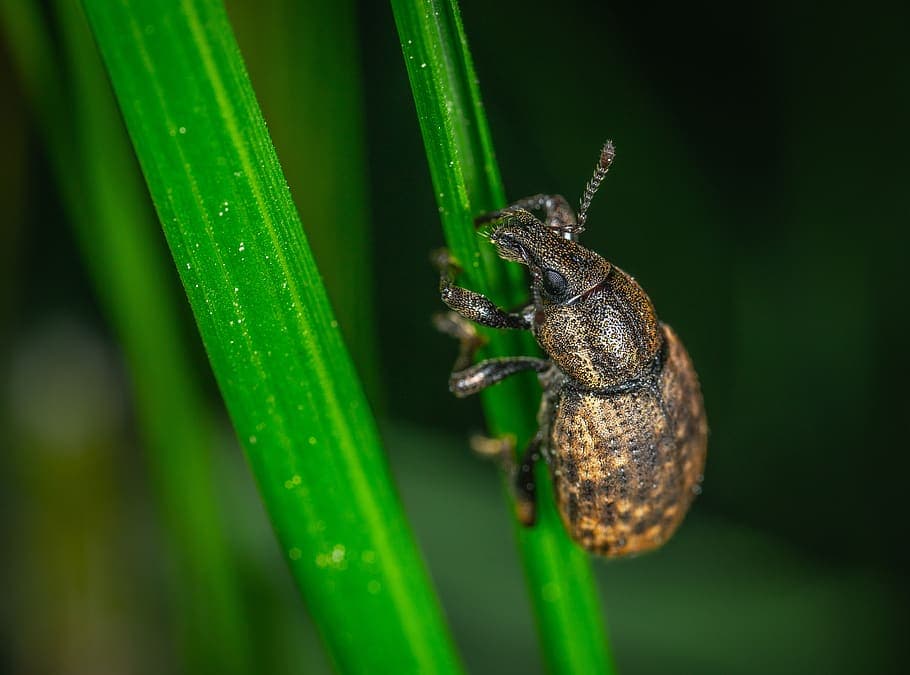Why are there notches all over the leaves of my rhododendron?
The answer is most likely the root weevil. Root weevils are little beetles about ½ inches long that appear in the late spring and early summer.
In the Northwest, they prefer to feed on the tender new growth of rhododendron plants. They also enjoy eating several other plants that are favorites of gardeners. You can find them on yews, hemlocks, strawberries, salal, huckleberry, and several others.

Adult root weevils are night feeders spending their days just under the soil surface staying cool and hiding from predators. The best way to know if you have a root weevil problem is the distinctive notching on the edges of leaves.
The Root Weevil Life Cycle
An adult root weevil will lay its eggs in the soil under your favorite rhododendron in mid-summer. Those eggs will hatch into larvae in late summer to early fall where they will over-winter in the top layer of soil, feeding on the fine root mass of the plant. As they grow, they will become more destructive, feeding on larger and larger roots and even the base of the plant. As the soil starts to warm in the spring, pupation takes place and the larvae will become an adult. The adult will forage on leaves for 20-45 days before it is able to start producing it’s own eggs. One adult can lay around 200 eggs in its life span of 90-120 days.
How to Get Rid of Weevils
There are many chemical insecticides on the market that can control root weevil, but they are tricky to use and can be harmful to beneficial insects. Timing is key when using chemical insecticides. You will need to know what stage of life the root weevil is currently in for maximum effectiveness. A granular grub control on the soil can wipe out the root weevil in its larvae stage if they are actively feeding at the time. A foliar insecticide can kill the adults if they are feeding as well. If they are not actively feeding you will just be wasting time, chemicals, and money. Root weevils are only actively feeding about 40% of their life.

Biological Control
As an alternative to chemical treatment, use beneficial nematodes. Nematodes are small round worms that don’t get any bigger than 1 cm. They can be safely applied to the shrub and surrounding soil without use of masks, gloves, or protective equipment. They are harmless to pets, wildlife, beneficial insects, and humans, but they do quite a number on the root weevil. They actively and selectively seek out both the larval and adult root weevil.
Nematodes can be applied from early spring through fall and be completely effective. Looking for a place to buy? Give us a call!

